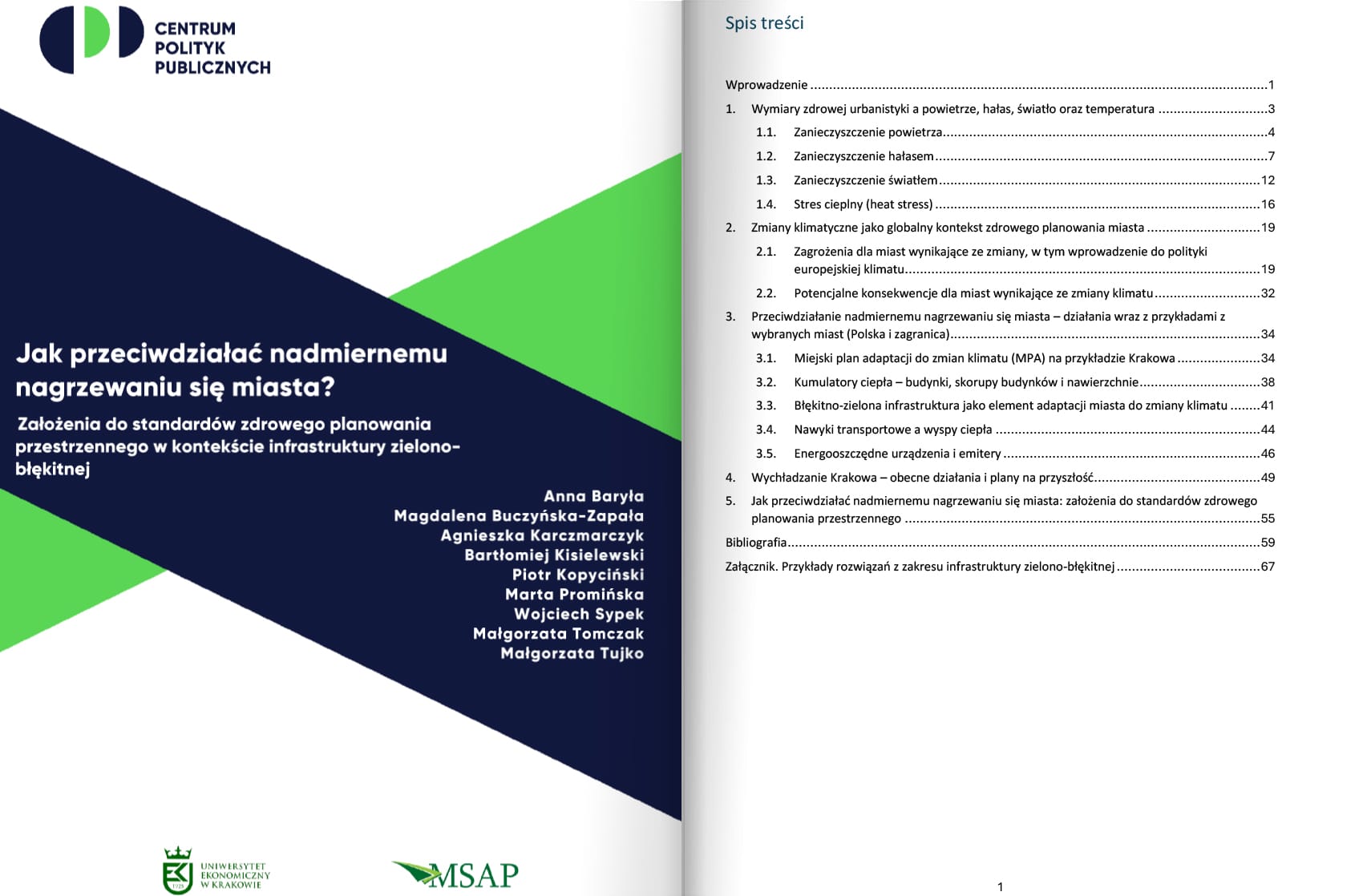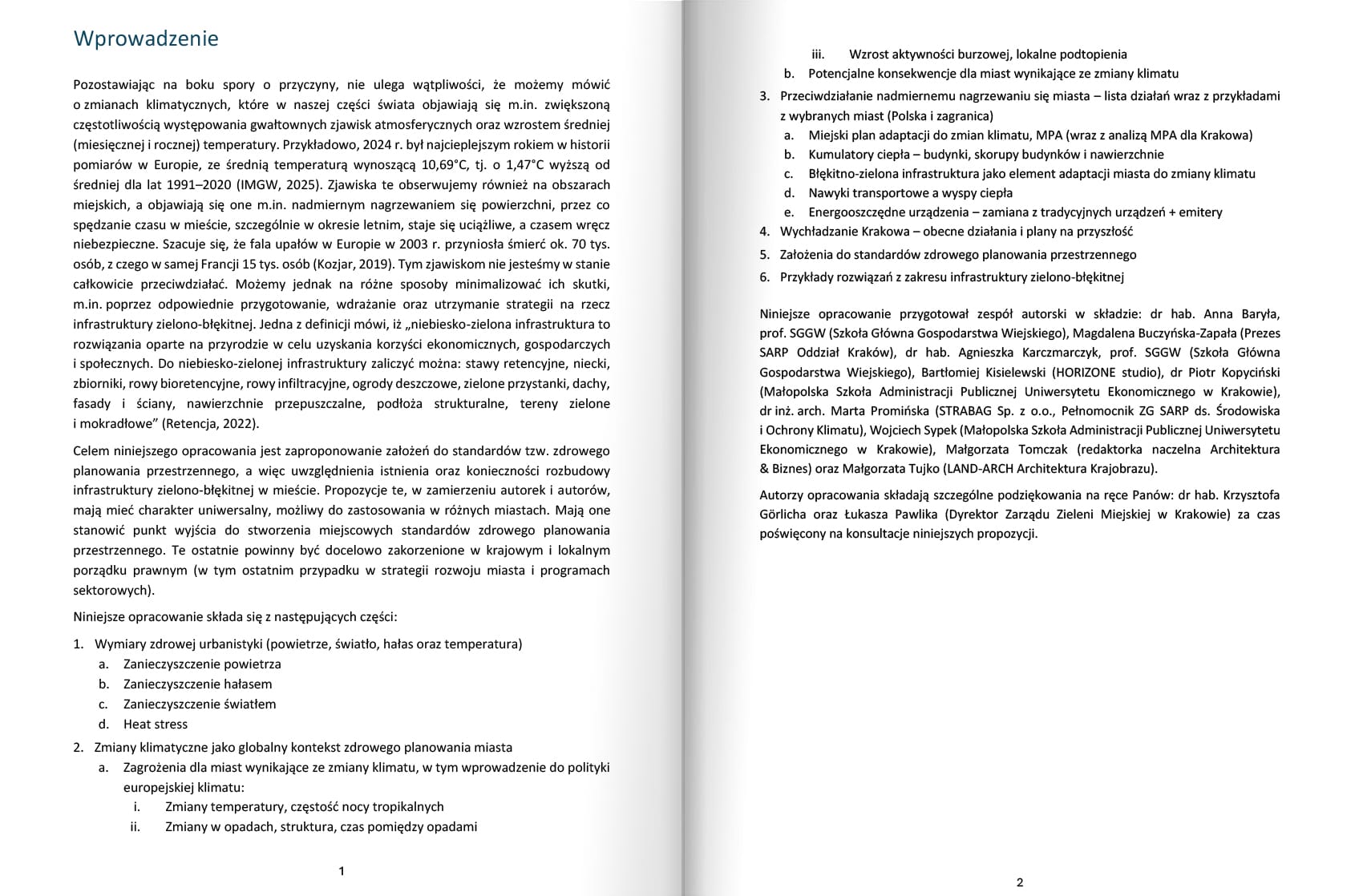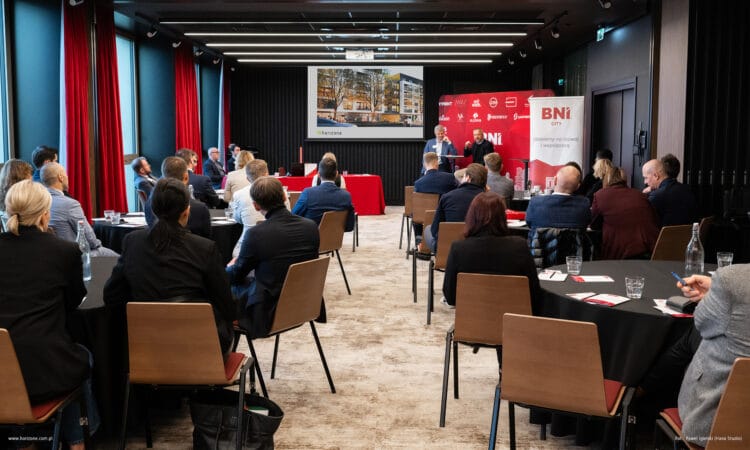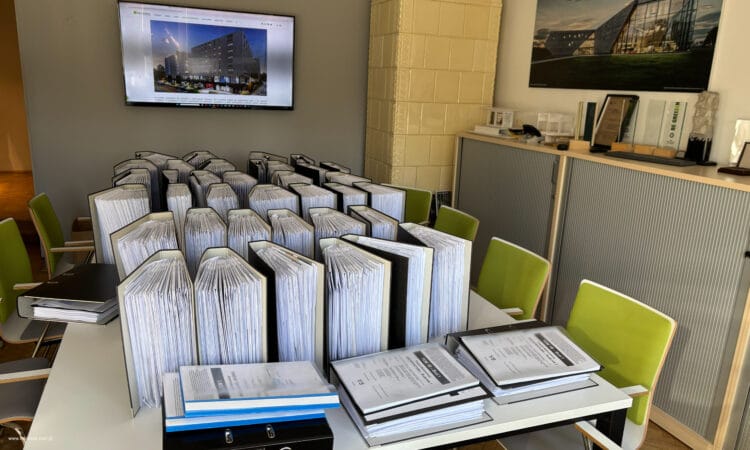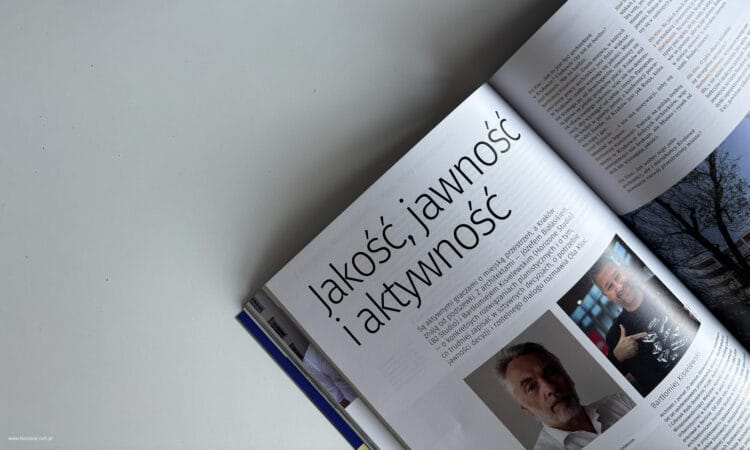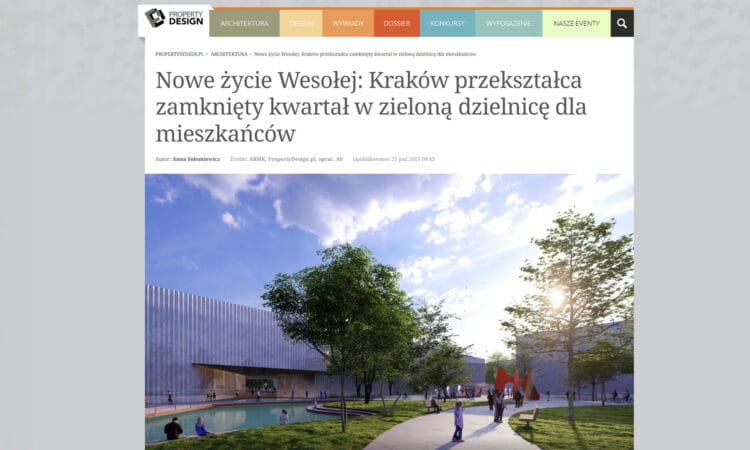The report entitled “Healthy urbanism. How to design cities resistant to climate change” is a proposal of universal standards that can be applied in various cities. It includes both a diagnosis of the current situation and specific recommendations for urban planners, city authorities, developers and local communities.
“The aim of the study is to propose assumptions for the standards of so-called healthy spatial planning, i.e. taking into account the existence and the need to expand green and blue infrastructure in the city. These proposals, as intended by the authors, are to be universal in nature, possible to be applied in various cities” – we read in the report of the Małopolska School of Public Administration of the University of Economics in Krakow (MSAP UEK).
In the report, experts describe responsible and sustainable development of cities. They draw attention to air pollution, but also light pollution and the problem of noise. An important part of it is climate change.
And the effects of these changes have already been catastrophic. In many parts of the world, severe weather events create conditions of extreme danger, such as the flash floods and landslides in Caracas that killed 30,000 people in 1999; the extreme heat in Paris in the summer of 2003 that caused an estimated 15,000 deaths; and Hurricane Katrina, which devastated New Orleans in 2005 and killed almost 2,000 people.
In Poland, heat waves and low water levels in rivers in August 2015 led to restrictions in the supply of electricity. They affected approx. 8 thousand companies.
MSAP UEK experts point out that climate change also affects everyday life in cities, and manifests itself, among others, in excessive heating of surfaces. One of the heat waves in Europe in recent years brought the deaths of approx. 70 thousand people. We are not able to completely counteract these phenomena. However, we can minimize their effects in various ways.
At the center of the study is the concept of green-blue infrastructure – a system of urban activities and solutions that use greenery and water to naturally cool cities, improve air quality and increase precipitation retention. These include rain gardens, green roofs, facades, retention basins, infiltration ponds and permeable surfaces – in other words, everything that can transform concrete spaces into healthier and more resistant to heat.
The report also includes a set of good practices already used in Polish cities – such as the “Wychładzanie Krakowa” programme, “Miasto Gąbka” in Legnica or “Złap deszczówkę” in Lublin. It also shows that responsible urban planning is not a dream – it is a real direction that local governments and designers are already following.
It is worth emphasizing what is happening in Krakow. The Wychładzanie Krakowa programme consists of many elements. These include: Increasing the Forest Cover of the City of Krakow, which assumes doubling the area of forests from 4% to 8% of the city area. Development of Green Infrastructure: the city invests in the creation and revitalization of green areas, such as parks, squares and green roofs. The expansion of urban greenery contributes to lowering the temperature in the city thanks to the cooling effect of plant evaporation and shading.
Since 2015, 19 new parks have been created, increasing their number from 43 to 62. In addition, the city has projects related to water management and reducing the urban heat island effect. And the so-called Climate Quarter: an urban project covering the area between Dietla and Grzegórzecka streets, Daszyńskiego Avenue and the Vistula River, the aim of which is to adapt the city to climate change by creating garden streets, but also to revitalize the area.
Assumptions for the standards of healthy spatial planning
Strategically: cooperation of designers, developers, urban planners, public health experts and city authorities in each investment from the first stage of its design and procedure.
Spatially: change of philosophy regarding the preparation of development plans – mandatory integration of green and blue infrastructure, clear standards for investors, consistent reduction of the urban heat island effect.
Without circumventing the law: clear standards require clear interpretation and enforcement of the law. This includes, among others, the prohibition of dividing a consolidated plot for the needs of the investment. A single-family house is a single-family house. A service premises is not an apartment.
Good practices: introduction of a green-blue audit of urban investments – e.g. greening of the walls of tenement houses. Mandatory participation in architectural and urban competitions of people with landscape architect competences. Establishment, implementation and compliance by the relevant municipal unit with standards for the maintenance and care of blue-green infrastructure.
Cooperation between different groups – urban planners, designers, scientists, activists and authorities – is not only possible, but necessary. As emphasized by Dr. Piotr Kopyciński from the University of Economics in Krakow: “With proper coordination of activities, it will be possible to create spaces that are friendly to people and the environment. This requires courage, but it will pay off for everyone.”
Bartłomiej Kisielewski, as one of the authors of the report, brings to this process the experience of an architect and urban planner focused on sustainable development. His participation in the development of the assumptions for the standards of healthy spatial planning is not only a substantive contribution, but also a practical voice in the discussion about the future of our cities.
The report consists of 5 chapters
- Chapter 1. Dimensions of healthy urban planning and air, noise, light and temperature
- Chapter 2. Climate change as a global context for healthy city planning
- Chapter 3. Counteracting excessive heating of cities – actions with examples of selected cities (Poland and abroad)
- Chapter 4. Cooling down Krakow – current actions and plans for the future
- Chapter 5. How to counteract excessive heating of the city: assumptions for the standards of healthy spatial planning
Authors of the report: dr hab. Anna Baryła, prof. SGGW, Magdalena Buczyńska-Zapała (SARP Kraków), dr hab. Agnieszka Karczmarczyk, prof. SGGW, Bartłomiej Kisielewski (HORIZONE Studio), dr Piotr Kopyciński (MSAP UEK), dr inż. arch. Marta Promińska (STRABAG), Wojciech Sypek (MSAP UEK), Małgorzata Tomczak (Architecture & Business), Małgorzata Tujko (LAND-ARCH).

